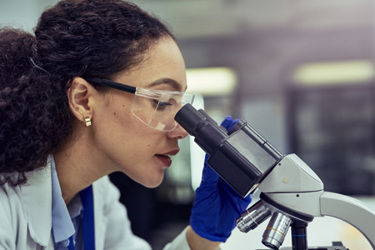Formulation Is Key For Y-mAbs' Self-Assembling Antibody
A conversation with Michael Rossi, chief executive officer, Y-mAbs Therapeutics

A key part of what makes Y-mAbs Therapeutics’ two-step bispecific fusion protein and radiotherapeutic effective comes down to concentration.
The company’s self-assembly disassembly (SADA) pretargeted radioimmunotherapy platform (PRIT) relies on the tight binding of its tetramer, four low-molecular-weight monomers that self-assemble at the right concentration, to the CD38 glycoprotein, which is highly expressed by some blood cancers and solid tumors. Just as important, remaining tetramers in circulation break apart into monomers and clear the body before patients receive a dose of radiotherapeutic, lutetium-177, which then form a tight bond to the SADA tetramer.
Making such a complex, novel drug has led the Princeton, New Jersey-based company to develop new analytical methods and find new ways to engage with regulators who haven’t encountered radiotherapeutics in this context before.
With one commercial product, the anti-GD2 therapy Danyelza for relapsed/refractory high-risk neuroblastoma in the bone and/or bone marrow, in its portfolio, the company is also focusing on its radiopharmaceutical portfolio, which currently includes two SADA clinical programs: a Phase 1 clinical trial evaluating GD2-SADA in solid tumors (Trial 1001), and a Phase 1 clinical trial evaluating CD-38SADA in non-Hodgkin lymphoma (Trial 1201).
The company dosed its first patient in Trial 1201 at the end of April, just a few days before we sat down with Michael Rossi, president and CEO at Y-mAbs, to talk about the technical and regulatory complexities the company has encountered as it moves its medicines through the phases. Here’s what he told us.
What bioreactor or expression system are you using to produce the SADA construct, and how have you adapted it for clinical-grade manufacturing?
We currently have two of our SADA assets in clinical trials. Both evolved from early proof of concept to cGMP-ready drug. For clinical-grade manufacturing, we use a wave mix bioreactor that facilitates the mixing and oxygen transfer, which is a scale-up from our in-house pilot studies using flasks. We've scaled up from the clinical to full cGMP commercial with both of these — in our Trial 1001 and Trial 1201.
Is it fairly transferable to step up like that?
The scale-up is relatively straightforward, although we had to work around some of the components in our buffer’s overall concentrations to mitigate aggregate formation. But, to date, we produce batches up to 250 liters without issues. So, the scale-up has gone quite well.
Do you expect that's what commercial scale looks like? Is 250 liters getting you in the ballpark?
I think it is. Radiopharmaceuticals tend to be high value, low volume. Scaling up to 1,000 or 2,000 liters will give you quite a bit of material. What's interesting about a lot of these products: you don't use as much drug in radiopharmaceuticals because the drug itself is the carrier where the isotope is actually creating the mechanism of action. You actually need less drug to create the physiologic change in the body.
Any challenges with yields, purity, or integrity?
No, it has actually been very good. The process follows a lot of the typical biologic processes. So for us, being a company that is really founded on antibodies, I'd say it’s a little bit less complex than doing a full antibody.
We're using a fragment of that antibody during the process, and it allows us to move in a much more efficient manner.
What's novel about our SADA complex is that we are first developing the monomers, which follows that similar biologic process. Then, we have a linker that would aggregate those four monomers into a tetramer.
It's a stepwise approach of utilizing the known and moving into the new or the unknown. There was so much preclinical work done that the scale-up was pretty straightforward as we moved it into cGMP.
CD38-SADA's dynamism implies sensitivity to environmental conditions. What formulation strategies maintain tetramer stability before it reaches patients?
CD38-SADA is currently under investigation. We dosed our first patient in Trial 1201 at the end of April. In this trial, we are focusing on patients with relapsed or refractory non-Hodgkin lymphoma — a very difficult patient population. The mechanism of action of our SADA platform, the self-assembling and disassembling activity, is largely dependent on concentration.
Formulation for this is critical, and what we've done is extensive formulation studies on both our drug substance as well as the drug product with SADA. Formation into those tetramers, which are very stable, is concentration-dependent.
So, by holding our stock in such a way, which is 10 milligrams per milliliter, they maintain their tetrameric form while they're in the vial.
They are injected as tetramers, and as they begin to bind onto the sites in the body and diluted in the blood, they'll break apart into monomers and get eliminated rather quickly. So, you get the benefit of having the larger molecule for the first bit of circulation. Once they start to decrease in concentration, they will start to break apart and get eliminated. For us, it's a two-step approach where we're pre-targeting the tumor with the drug and creating open binding sites for the isotope to bind onto.
And that's why in the manufacturing, it's important for us to keep it in that tetrameric form. That's going to be the highest concentration. Creating a stable drug product that stays in tetrameric form allows you to inject directly into humans and get the benefit of having the assembled tetramer that will then self-disassemble into the monomers.
How do you establish and validate CQAs for such a modular, condition-sensitive therapeutic?
Most of our CQAs are typical for biologics, but we do use a custom mass photometry and assay to evaluate the disassembly kinetics of the compounds and determine the monomer/tetramer prevalence or ratios at various concentrations. We've developed the custom mass cytometry assay to be able to measure that.
How have regulators reacted to such a novel product with so many moving parts?
They've asked us to characterize the self-assembly and disassembly in vitro, which required us to develop that custom assay.
The assay itself is quite robust and in vitro, and we're also currently exploring adapting it to be compatible with in vivo samples from both nonclinical and clinical studies. Most of the standard assays for characterization of SADA are not required for further optimization. But for the FDA, this was a departure from what they've done in the past. In the radiopharmaceutical space, radiotherapeutics all follow a pre-tagged, one-step approach, so they're injected as a conjugated radiopharmaceutical.
This was a departure in that, from a manufacturing point of view. You're manufacturing a drug, injecting it, and then doing an in vivo tag of the isotope to that drug after it's on the tumor. So, there is quite a bit of complexity, and the FDA has been very open and very engaged with us to make this successful.
Have things gotten more challenging following the reduction in force at the FDA?
It's funny. I get that question a lot. There's still a lot of watch-and-wait going on to figure out what's real and what's not real. The good news is, a lot of our close points of contact and people we've worked with for a long time at the FDA are still there, they're still doing good work, they're still moving things along, and they've moved us along quickly.
My fear, and this is more my opinion, is you've got a lot of people in the FDA who have significant tenure and domain knowledge that may be lost if they choose to leave the agency. Many do what they do because they love it, and a lot of them are there well past retirement age because they love what they do.
To the FDA’s credit, that fear hasn't materialized yet, but I am hearing that they're looking to change some PDUFA dates on biologics, and that could create some issues if we see expectations are getting pushed out. You can meet expectations, but if you set them so low that they're not realistic and usable, you're not helping patients, and you're not speeding products to market.
About The Expert:
 Michael Rossi is president, CEO, and a member of the board at Y-mAbs. He has over 30 years of experience in radiopharmaceuticals, drug development, and commercialization. Previously, he was the medical group president at Mirion Technologies. Before that, he was head of radioligand imaging at Novartis’ Advanced Accelerators Applications. He also worked at Jubilant Pharma, GE Healthcare, Tyco Healthcare/Mallinckrodt, and Syncor International. He received a B.Sc. from the University of the Sciences and is an authorized nuclear pharmacist.
Michael Rossi is president, CEO, and a member of the board at Y-mAbs. He has over 30 years of experience in radiopharmaceuticals, drug development, and commercialization. Previously, he was the medical group president at Mirion Technologies. Before that, he was head of radioligand imaging at Novartis’ Advanced Accelerators Applications. He also worked at Jubilant Pharma, GE Healthcare, Tyco Healthcare/Mallinckrodt, and Syncor International. He received a B.Sc. from the University of the Sciences and is an authorized nuclear pharmacist.
